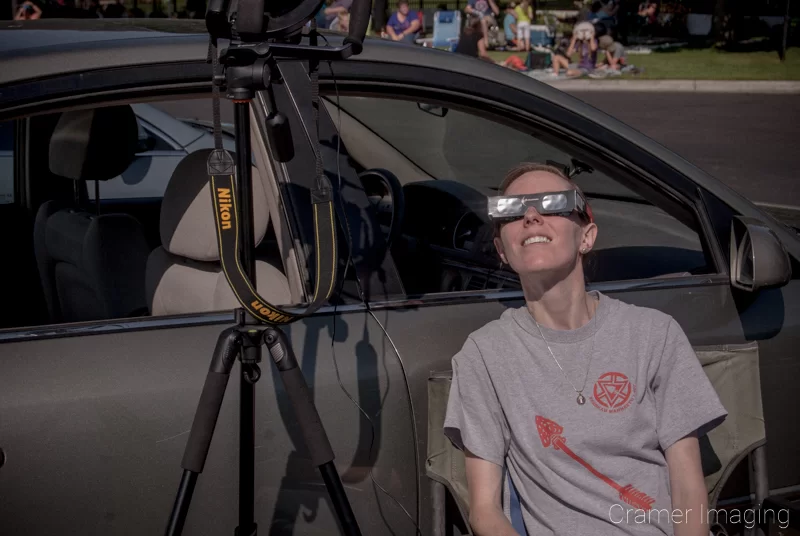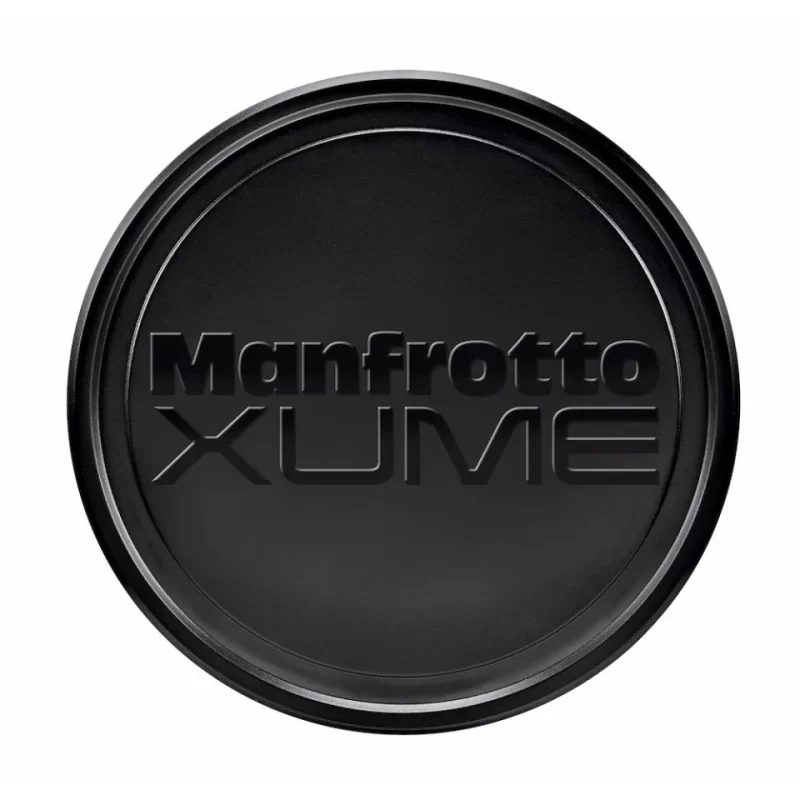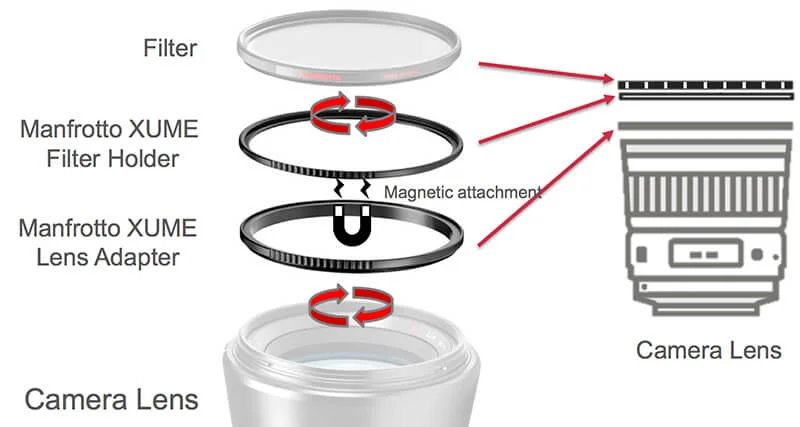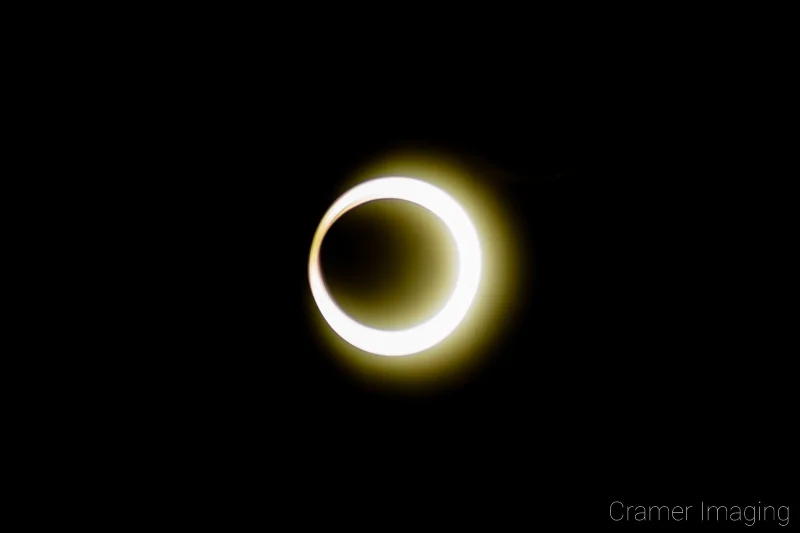Who here has needed to assemble something useful from spare parts? I bet there’s a few hands raised. Now, how about assembling a discontinued product from spare parts? That’s much more difficult. But that’s the situation I found myself in recently. Here’s the story about how I made things happen assembling a discontinued lens filter system from leftover spare parts.
The Backstory
This story begins with the 2017 total solar eclipse. As a budding landscape photographer, I naturally wanted photos. I managed to get in on my local camera supply shop’s order for solar lens filters. I thought I had it made. When the time came, I chose my location and set up for the shot.


What I didn’t anticipate was the need to reduce or even remove my solar neutral density lens filters when the eclipse reached peak. This sadly resulted in no usable photos for me. I found that result super unsatisfactory as a photographer. It bothered me for years.

The Hunt for Solar Lens Filter Holders
With the most recent annular eclipse this past October (at time of writing), I began my physical preparation more than a month and a half in advance. I previously saved a few Instagram ads featuring camera related products which I might need later. On that list was a camera filter holder by Alter. It offered me the ability to flip up my camera filters on a whim. This was exactly what I wanted. So, I started looking into it. This is where the problems started.

Option 1: Alter System
As I quickly learned, the Alter system was discontinued a while ago. I learned they went insolvent in 2020 in my research. As I dug deeper into internet research, I discovered that I could find some leftovers from the heyday which were too small for any of my camera lenses. I kept looking but there was nothing. Their website is removed. Their crowdfunding campaigns are still up but one is marked as closed. I didn’t want to try the other to see if their still listed “available products” were actually still available or not. The only remaining leftover inventory I could locate was for lenses way smaller than mine.

Redirection
So, the seemingly perfect Alter system just isn’t available anymore. That was a bummer. But, getting back up on the horse again, I wanted to know if there was another option I could use. A quick call to my camera supply shop told me to look into a magnetic system. They had nothing currently in stock so that was also a problem. Yet another problem arose from the fact that most of the magnetic lens filters I see advertised today are part of a proprietary system so they won’t work with anything else. I already had the solar filters so I didn’t want to buy more needlessly.

Option 2: Manfrotto Xume System
I started looking for a system which would integrate magnetic quick swapping with pre-existing threaded lens filters. It took some work but I found one: the Xume system by Manfrotto. That’s where problems part 2 began. This system is also discontinued. My internet research suggested that the reason was because the sub-contractor making the system for Manfrotto went out of business. My chagrin grew. Here was another seemingly perfect system discontinued long before I needed it. Still, I once again researched more to see if I could find leftovers or spare parts.

Small Successes in the Hunt
I searched Amazon, Ebay, Adorama, B&H Photo, and other websites to see what I could find with Xume. With this attempt, I found more success than with Alter. I managed to locate a few places with leftover spare parts of the system but none of the original kits. Thanks to studying Manfrotto’s leftover marketing materials on the system, I learned that I needed the lens adapter and the filter holder for the respective lens size I wanted to use. With my current solar lens filter set, I needed 62mm Xume parts. I found what I needed, but I needed to buy them from different online retailers. Thankfully, they were both domestic retailers.

So, armed with this information, I started ordering the parts I needed for the eclipse. They arrived and I enjoyed testing them out. The lens adapter attaches into the threads of my lens or my current UV/polarizing filters. The filter holder attaches into the threads of the filter(s) I want to quick release from the lens. Then the filter holder attaches with surprising strength to the lens adapter with a satisfying click.
Using The 62mm Lens Filter System
Realizing that I would want access to my 52mm lenses as well during the eclipse, I ordered another 62mm lens adapter for my step-up/step-down ring. This enables me to swap my lenses out quickly during the incredibly short window of the eclipse and swap the filters out just as quickly. This new lens filter system sure came in handy and I put them to good use during the eclipse.

Using this system, I took a series of photos which showed the annular ring of fire eclipse in all its glory. Observe the kinds of photos I took using the Xume system.

As you can easily tell, this was a much improved example from the 2017 photo above. Thanks to the Xume system, I could quickly swap my filters back and forth as needed. If you want to see more of the photos I took during the eclipse (along with read the story of taking them), then check out this article about the ring of fire eclipse.
The Hunt Part 2
Some other sizes of the Xume lens filter system are not so easy to locate. 52mm is a popular size so locating leftover spare parts for that size is much more difficult. In fact, I found I needed to search internationally as domestic options utterly failed me for one specific part: the filter holder. Not every camera shop contacted replied back. So I don’t know exactly what supply I could find abroad. However, I did locate a couple sources. But not every source claiming to have stock did, in fact, have stock on-hand. Friends of friends vacationing in the area checked on that for me. I’m glad I cultivated multiple sources as I needed them.

One of the sources I cultivated was an Ebay listing in Japan. It ended up being the source which worked out for me. After waiting a month for international shipping (right through Christmas, no less), my package finally arrived. When tested, the system worked as perfectly for 52mm as it does for 62mm. I’m delighted.
Conclusion
In conclusion, assembling a discontinued lens filter system from leftover spare parts is quite an experience. It required lots of hunting and tenacity. It required calling upon friends of friends of friends to assist in an eventually fruitless in-person search overseas. Also, it required lots of patience to trace each lead to its final conclusion. Still, my tenacity and patience paid off and I managed to assemble the system I want. I now have a Manfrotto Xume system to use with my camera lenses.



